We had a few issues today, starting with a very unclear road closure and diversion that meant we took much longer to leave Chelmsford than we should have. We were then caught behind a big truck on a narrow road so stopped to find a cache instead. This was at a church and was one of over 1000 that seem to form a church based series here.
We arrived at Thaxted at a good time for morning tea
. We had chosen this town because Wendy had a brochure about it that appealed to me. It described the town as a thriving town which moves with the time but also treats its heritage with respect. Its recorded history dates back to before the Doomsday book. Roman remains have been found around the town.
It was easy to get a park in the main street and we looked around for a café. The street had a variety of shops but also a sign for a café called Poppies. This proved to be a great place. It was run by the descendent of a tea planter in one of the old buildings with a low roof and bent beams. John had a traditional cream tea and I had a lemonade floater which was homemade lemonade with scoop of sorbet on the top. The young waitress was very friendly and efficient and the food was so nice that I did consider coming back for an early lunch. John made the waitress's day by saying it was even nicer than the cream tea he had at Harrod’s.
We then walked up the short street to the Parish Church of St John the Baptist
. I still get surprised when the houses are built right to the side of the road so I was not sure at first if the path was private or public. The town was very rich in the 14th and 15th centuries and this is when the church was built over a period of 170 years. The spire is about 60m high and the church is also 60m long. There are a number of families buried under the church and it was sad to see the young ages of the children at their death. The font and organ were both impressive. The church had a number of leaflets about the town, postcards and bookmarks for sale, with an honesty box for the money.
We then looked at the outside of the thatched roof former Priests house and the Alm houses, which were both in the church grounds. The thatched house is now a private home but was also an alm house for many years as well. The Alm house building that now houses 3 couples was converted in 1975 from a block that had 16 rooms, each with 1 occupant.
We then walked along to the Windmill, although we knew it was only open inside on weekends. This mill was built in 1804 and worked for 100 years, producing flour. When it became uneconomic to work and could not be sold, it was left as a playground for the locals and later as a youth centre. It is now a rural museum and, with the sails reerected, is a town landmark. There were a lot of benches around the grounds and we could have picnicked here if we had been organised
. Instead we had a chat to a local couple who were visiting here for the first time. They live about 20 miles away but said they usually holiday away so this year they were trying to see all the local attractions. We recommended Poppies for lunch.
The Guildhall was built by the Cutlers’ Guild in about 1390 at the height of the town’s prosperity. We couldn’t get inside but could have a good look at the outside. When the cutlery industry declined in the 1550’s, the building became the administrative centre for the area but then fell into disrepair. It was restored and became the local Grammar school, providing free education for first boys (from about 1714) and then also girls (from 1830) from age 8 to 14 until it closed in 1878. The teacher was paid 35 pound per year with a 30 shilling pen and ink allowance.
We finished by walking up part of Stoney Lane, which is at one side of the Guildhall, and contains lots of old houses and is overlooked by part of the church
. The road is cobbled in the local stone. This stone was also on the sides of the church and on lots of other walls in the town. It looked familiar and then I realised it is the same stone as on the walls around Tyne Cot cemetery in Flanders. We later worked out it is flint.
We then drove to Finchingfield which is billed as one of the five prettiest villages in England. It had a village green, a duck pond, lots of thatched cottages and a stone church on the hill. It was easy to see how it earned its label. We just strolled around looking at the houses and shops and then watched a family escape from the green when a couple of geese became rather territorial.
We then went to the tourist information site in Coldchester to check on the exact site of one of the 3 heritage places we were planning to visit to find the opening hours had changed. The hours are longer but they were not open on Tuesday. So we had lunch at the Museum pub (over 300 years old) and replanned the day
.
We went into one of the local museums, Hollytrees. This was built for a wealthy widow in 1718 for 2000 pound, but she died before it was completed and left it to her niece. When her niece's first husband died, she married a local attorney and JP who fortunately had a strong interest in history. He was given the local castle by his mother in law because of his interest in history and he spent many years having it restored. He also planted the holly.
The museum was interactive and very good for children as well as adults. There was a sedan chair, which I had heard of but never seen, and a voiceover of the chairman talking about the job. The dolls house was interesting because it had a large outside garden as well. There was a model of the house as it used to be with a 'map’ of the rooms. When groups of children visit they are allowed to open up the rooms.
There was a display of children’s toys through the ages with information of the life that children would have had in the past when they would have been working from a young age. There was also the history of ‘Twinkle twinkle little star" as it was written by the daughter of a local Minister.
We then looked around the shops before returning to Great Baddow via Coggeshall in case the historic house there was open. Outside we could see the new hours pasted over the original hours and it was definitely closed. We tried to peer inside but could see very little. So instead we found a couple of caches at local churches. One was very like a thatched barn but the other was a more traditional style. The last cache was in a spot from which three church spires could be seen. We then went back for a lovely roast duck dinner with summer pudding to follow.
"Twinkle, twinkle, little star'
Tuesday, August 03, 2010
 Chelmsford, England, United Kingdom
Chelmsford, England, United Kingdom
Other Entries
-
60Flander's Fields
Jul 1717 days prior Bruges, Belgiumphoto_camera21videocam 0comment 1
Bruges, Belgiumphoto_camera21videocam 0comment 1 -
61Living by the canal
Jul 1816 days prior Schoorldam, Netherlandsphoto_camera26videocam 0comment 0
Schoorldam, Netherlandsphoto_camera26videocam 0comment 0 -
62Driving in the North Sea?
Jul 1915 days prior Bremen, Germanyphoto_camera9videocam 0comment 2
Bremen, Germanyphoto_camera9videocam 0comment 2 -
63Discovering Bremen with Peter
Jul 2014 days prior Bremen, Germanyphoto_camera27videocam 0comment 1
Bremen, Germanyphoto_camera27videocam 0comment 1 -
64Checking out Hamburg
Jul 2113 days prior Bremen, Germanyphoto_camera18videocam 0comment 0
Bremen, Germanyphoto_camera18videocam 0comment 0 -
65A trying day to Trier
Jul 2212 days prior Trier, Germanyphoto_camera3videocam 0comment 0
Trier, Germanyphoto_camera3videocam 0comment 0 -
66The Chartres Illuminations
Jul 2311 days prior Chartres, Francephoto_camera16videocam 0comment 0
Chartres, Francephoto_camera16videocam 0comment 0 -
67Arriving in Paris
Jul 2410 days prior Paris, Francephoto_camera6videocam 0comment 0
Paris, Francephoto_camera6videocam 0comment 0 -
68Our Tour de Paris
Jul 259 days prior Paris, Francephoto_camera17videocam 0comment 1
Paris, Francephoto_camera17videocam 0comment 1 -
69One evening in Paris
Jul 268 days prior Paris, Francephoto_camera12videocam 0comment 0
Paris, Francephoto_camera12videocam 0comment 0 -
70Arriving 'home' in London
Jul 277 days prior London, United Kingdomphoto_camera1videocam 0comment 0
London, United Kingdomphoto_camera1videocam 0comment 0 -
71The geocaching geeks of Gunnersbury
Jul 286 days prior London, United Kingdomphoto_camera8videocam 0comment 0
London, United Kingdomphoto_camera8videocam 0comment 0 -
72Goin' to the pikshers and kulture and stuff
Jul 295 days prior London, United Kingdomphoto_camera9videocam 0comment 0
London, United Kingdomphoto_camera9videocam 0comment 0 -
73'Oranges and Lemons...'
Jul 304 days prior London, United Kingdomphoto_camera9videocam 0comment 2
London, United Kingdomphoto_camera9videocam 0comment 2 -
74Locks and castles
Jul 313 days prior London, United Kingdomphoto_camera15videocam 0comment 0
London, United Kingdomphoto_camera15videocam 0comment 0 -
75North to Chelmsford
Aug 012 days prior Chelmsford, United Kingdomphoto_camera5videocam 0comment 0
Chelmsford, United Kingdomphoto_camera5videocam 0comment 0 -
76'Sarf End'
Aug 021 day prior Chelmsford, United Kingdomphoto_camera17videocam 0comment 0
Chelmsford, United Kingdomphoto_camera17videocam 0comment 0 -
77"Twinkle, twinkle, little star'
Aug 03 Chelmsford, United Kingdomphoto_camera19videocam 0comment 1
Chelmsford, United Kingdomphoto_camera19videocam 0comment 1 -
78A Constable landscape
Aug 041 day later Chelmsford, United Kingdomphoto_camera15videocam 0comment 2
Chelmsford, United Kingdomphoto_camera15videocam 0comment 2 -
79Off to the Wash
Aug 052 days later Dersingham, United Kingdomphoto_camera12videocam 0comment 0
Dersingham, United Kingdomphoto_camera12videocam 0comment 0 -
80Blickling Hall
Aug 063 days later Dersingham, United Kingdomphoto_camera18videocam 0comment 0
Dersingham, United Kingdomphoto_camera18videocam 0comment 0 -
81A quick visit to Liz's place
Aug 074 days later Dersingham, United Kingdomphoto_camera17videocam 0comment 0
Dersingham, United Kingdomphoto_camera17videocam 0comment 0 -
82Kings and castles
Aug 085 days later Dersingham, United Kingdomphoto_camera14videocam 0comment 0
Dersingham, United Kingdomphoto_camera14videocam 0comment 0 -
83Beautiful Whitby
Aug 096 days later Whitby, United Kingdomphoto_camera23videocam 0comment 1
Whitby, United Kingdomphoto_camera23videocam 0comment 1 -
84On the prowl at Whitby
Aug 107 days later Whitby, United Kingdomphoto_camera13videocam 0comment 0
Whitby, United Kingdomphoto_camera13videocam 0comment 0 -
85Rob Roy territory
Aug 118 days later Lochearnhead, United Kingdomphoto_camera11videocam 0comment 0
Lochearnhead, United Kingdomphoto_camera11videocam 0comment 0 -
86'By yon bonnie banks'
Aug 129 days later Inverness, United Kingdomphoto_camera17videocam 0comment 0
Inverness, United Kingdomphoto_camera17videocam 0comment 0 -
87To the top at John O'Groat's
Aug 1310 days later Inverness, United Kingdomphoto_camera13videocam 0comment 0
Inverness, United Kingdomphoto_camera13videocam 0comment 0 -
88Dawdling down to Dumfries
Aug 1411 days later Dumfries, United Kingdomphoto_camera14videocam 0comment 0
Dumfries, United Kingdomphoto_camera14videocam 0comment 0 -
89A visit to wee Robbie
Aug 1512 days later Dumfries, United Kingdomphoto_camera22videocam 0comment 0
Dumfries, United Kingdomphoto_camera22videocam 0comment 0 -
90Off to see cookie bear
Aug 1613 days later Shrewsbury, United Kingdomphoto_camera8videocam 0comment 0
Shrewsbury, United Kingdomphoto_camera8videocam 0comment 0 -
91Hanging out with Sabrina
Aug 1714 days later Shrewsbury, United Kingdomphoto_camera20videocam 0comment 0
Shrewsbury, United Kingdomphoto_camera20videocam 0comment 0 -
92Welcome to Wales boyo
Aug 1815 days later Cardiff, United Kingdomphoto_camera9videocam 0comment 0
Cardiff, United Kingdomphoto_camera9videocam 0comment 0 -
93Wales in the wet
Aug 1916 days later Cardiff, United Kingdomphoto_camera5videocam 0comment 1
Cardiff, United Kingdomphoto_camera5videocam 0comment 1 -
94Cardiff Castle to Barnhill Cottage
Aug 2017 days later Brampford Speke, United Kingdomphoto_camera16videocam 0comment 1
Brampford Speke, United Kingdomphoto_camera16videocam 0comment 1 -
95The Black Adderrrr....
Aug 2118 days later Brampford Speke, United Kingdomphoto_camera7videocam 0comment 0
Brampford Speke, United Kingdomphoto_camera7videocam 0comment 0
Comments
2025-05-22
Comment code: Ask author if the code is blank

 Chelmsford, England, United Kingdom
Chelmsford, England, United Kingdom
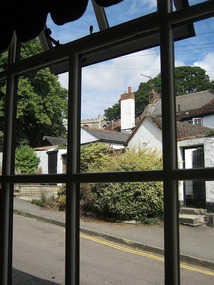
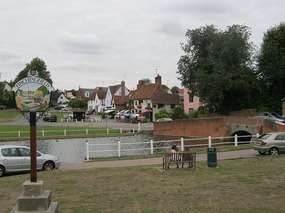
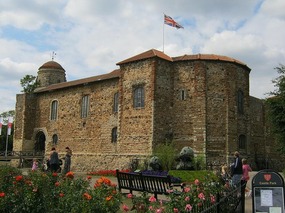
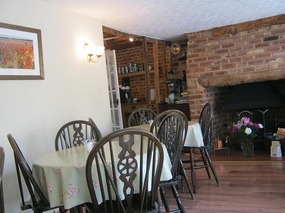





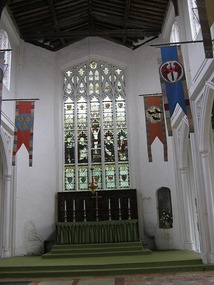
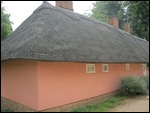
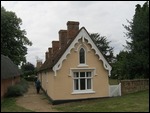
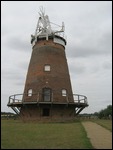
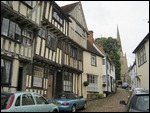
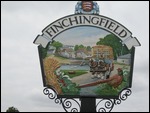
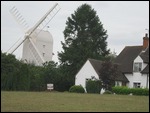
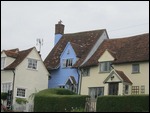
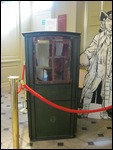

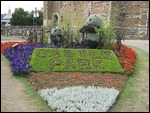

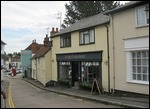
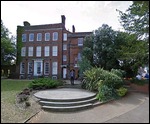
Ailsa
2010-08-09
Thanks - I enjoyed your day! You're really making the most of your days, how nice to just 'potter' around. Cream tea would have been my choice too, John.